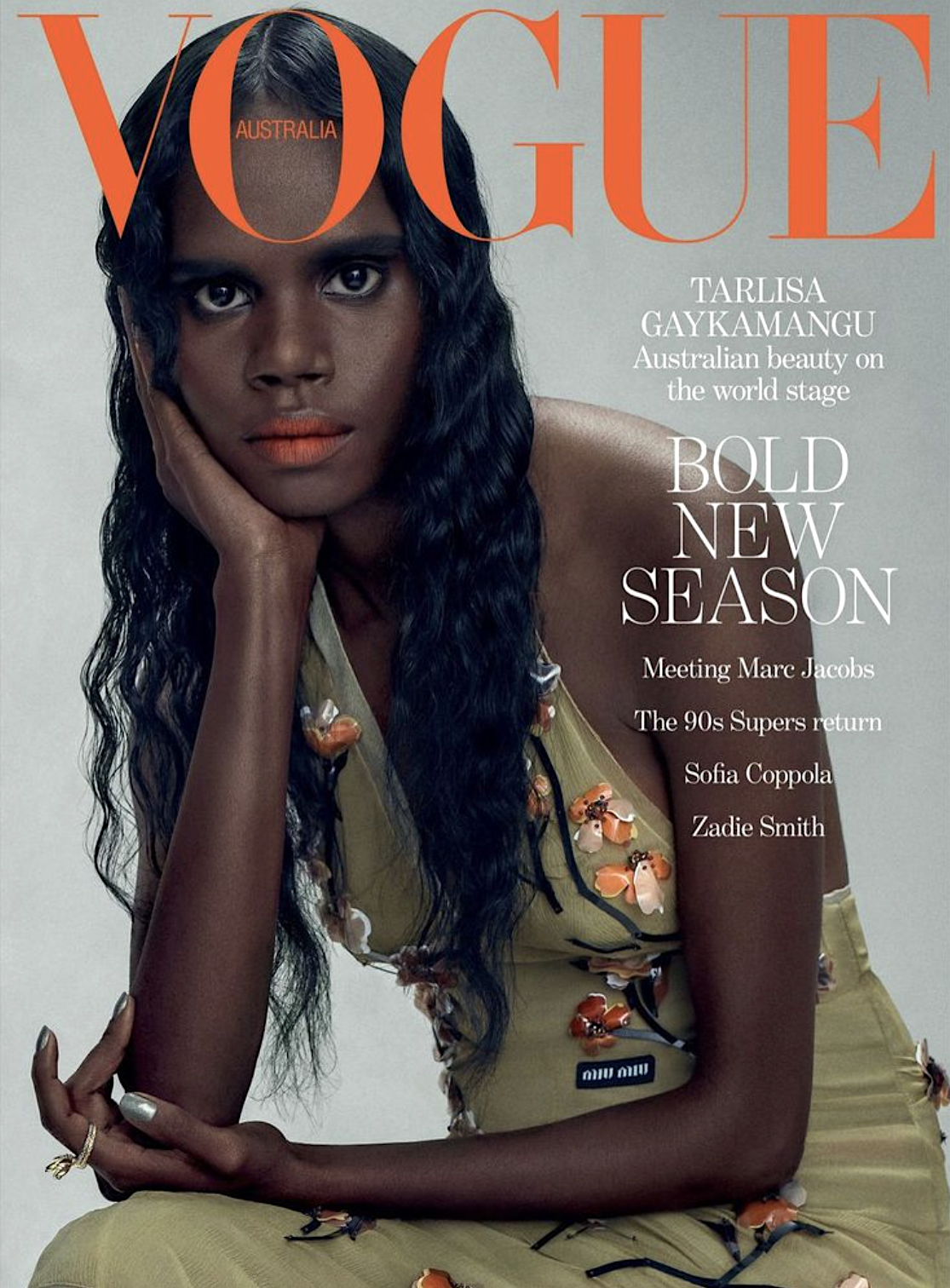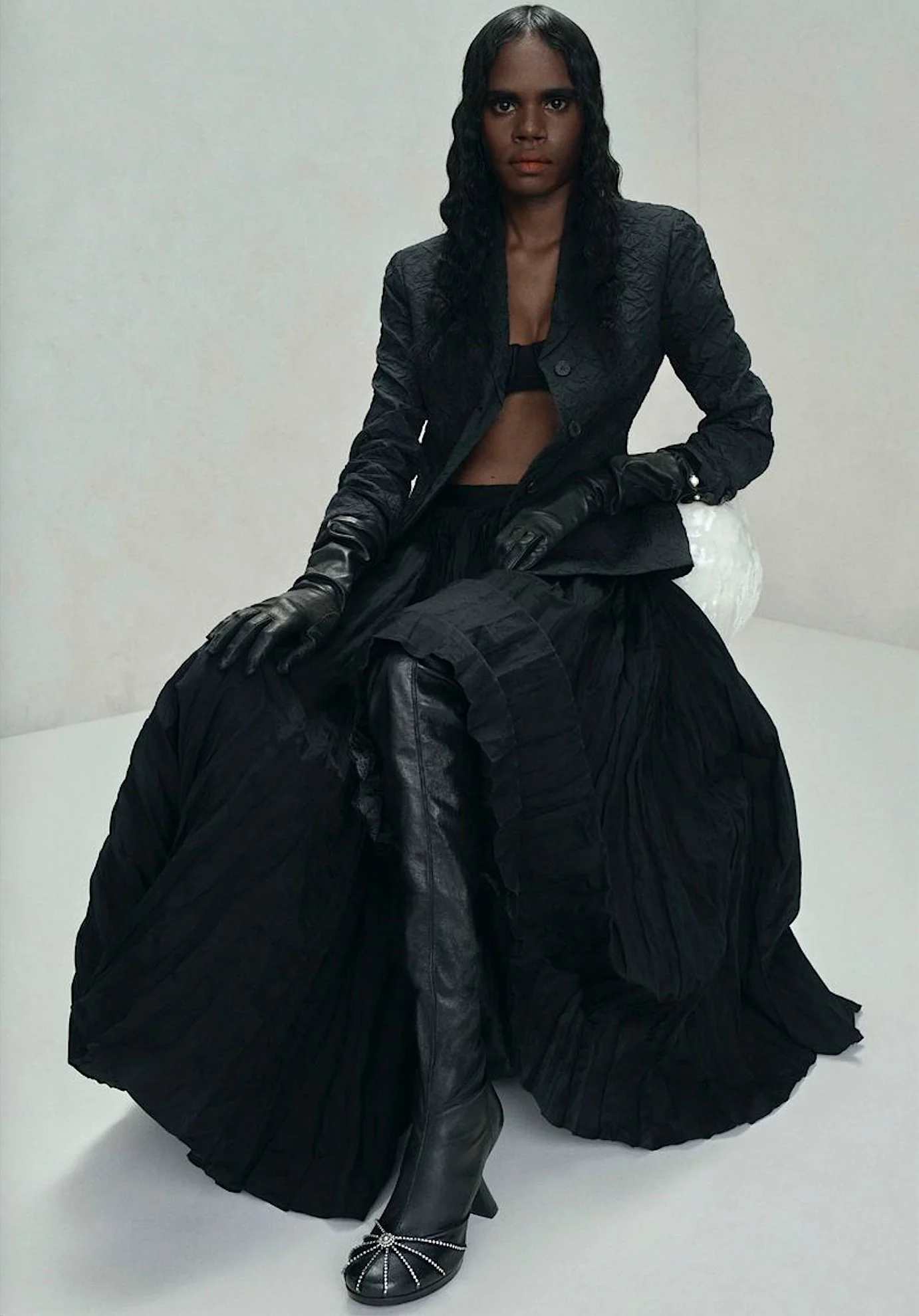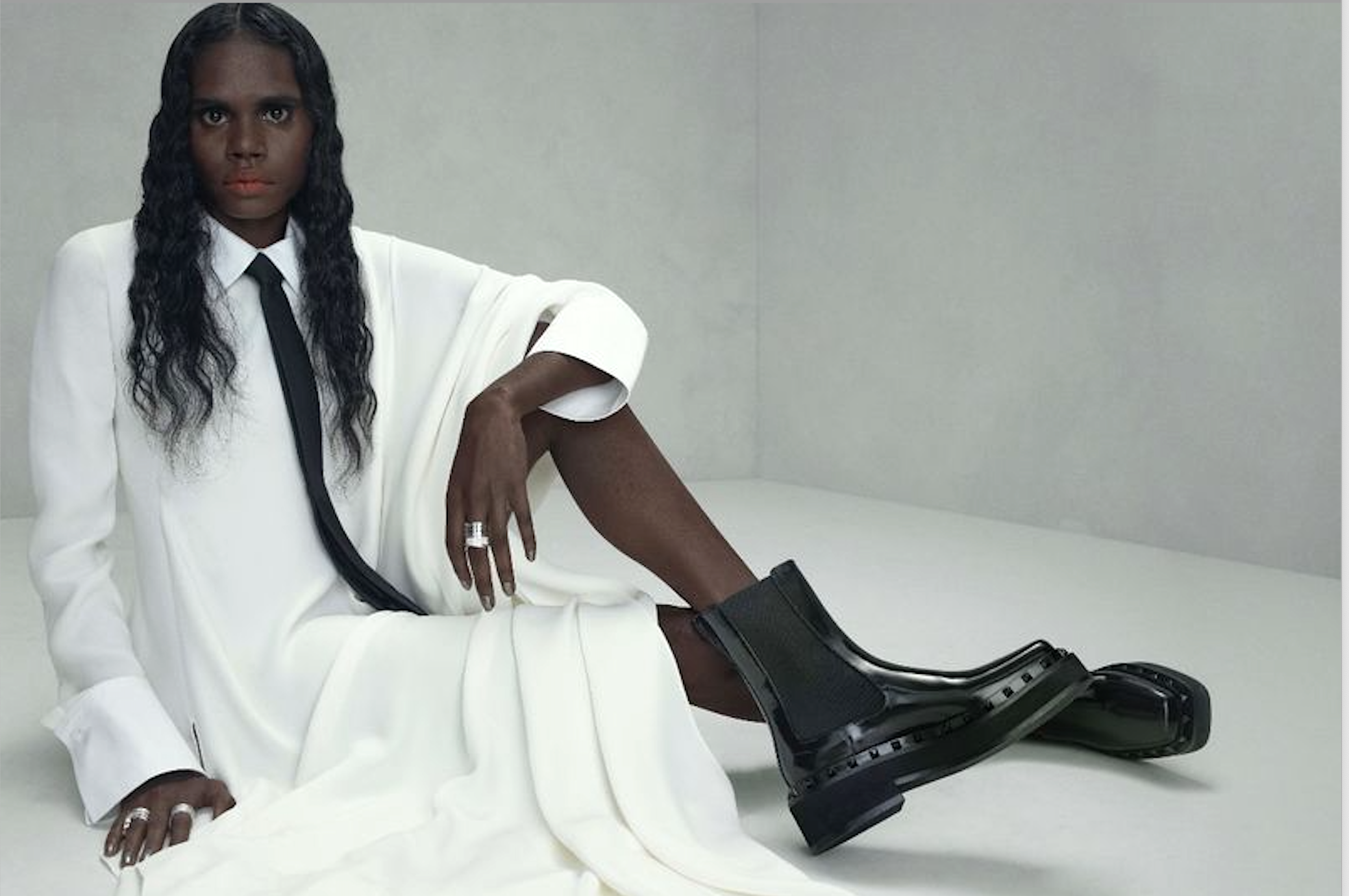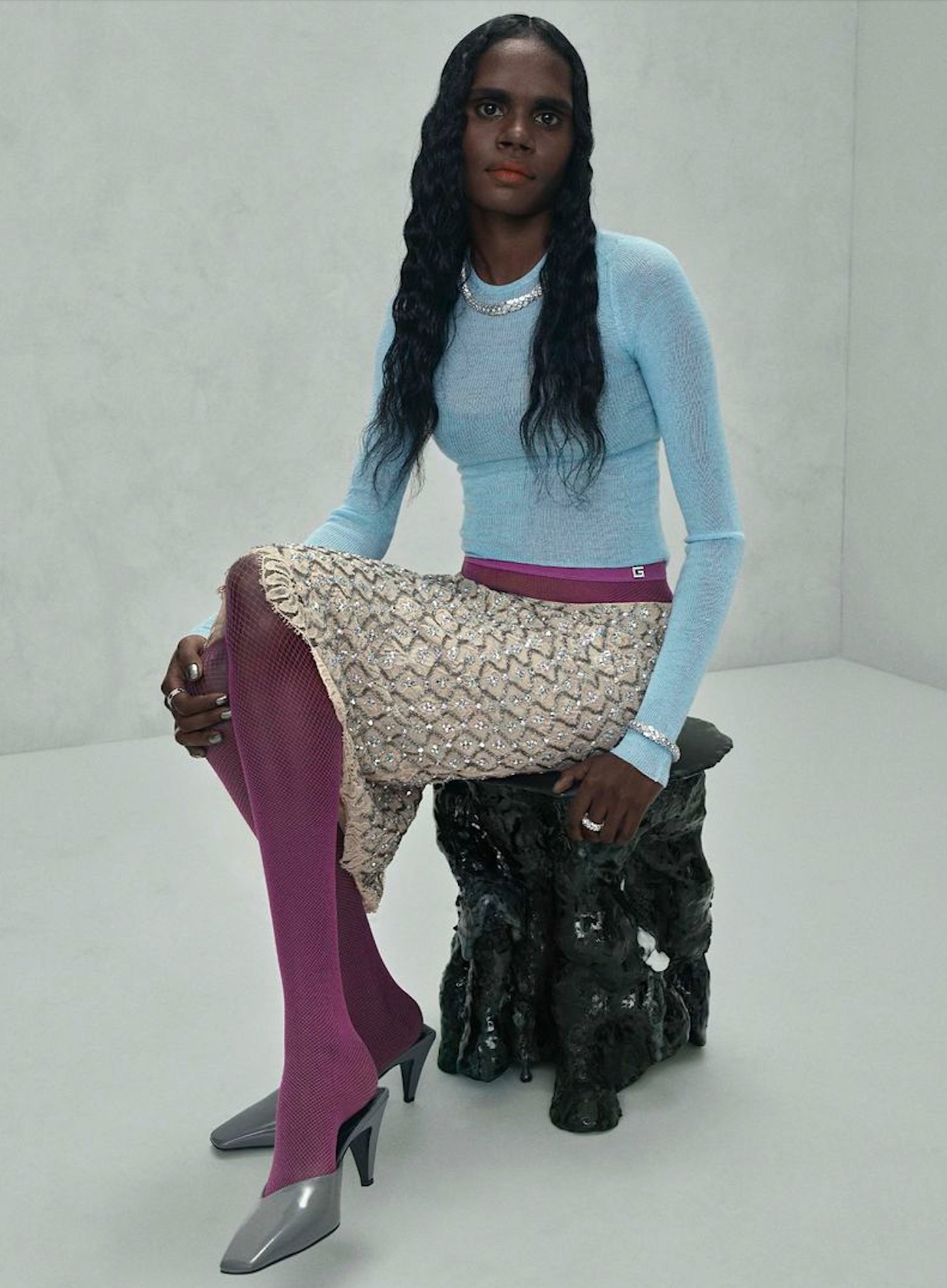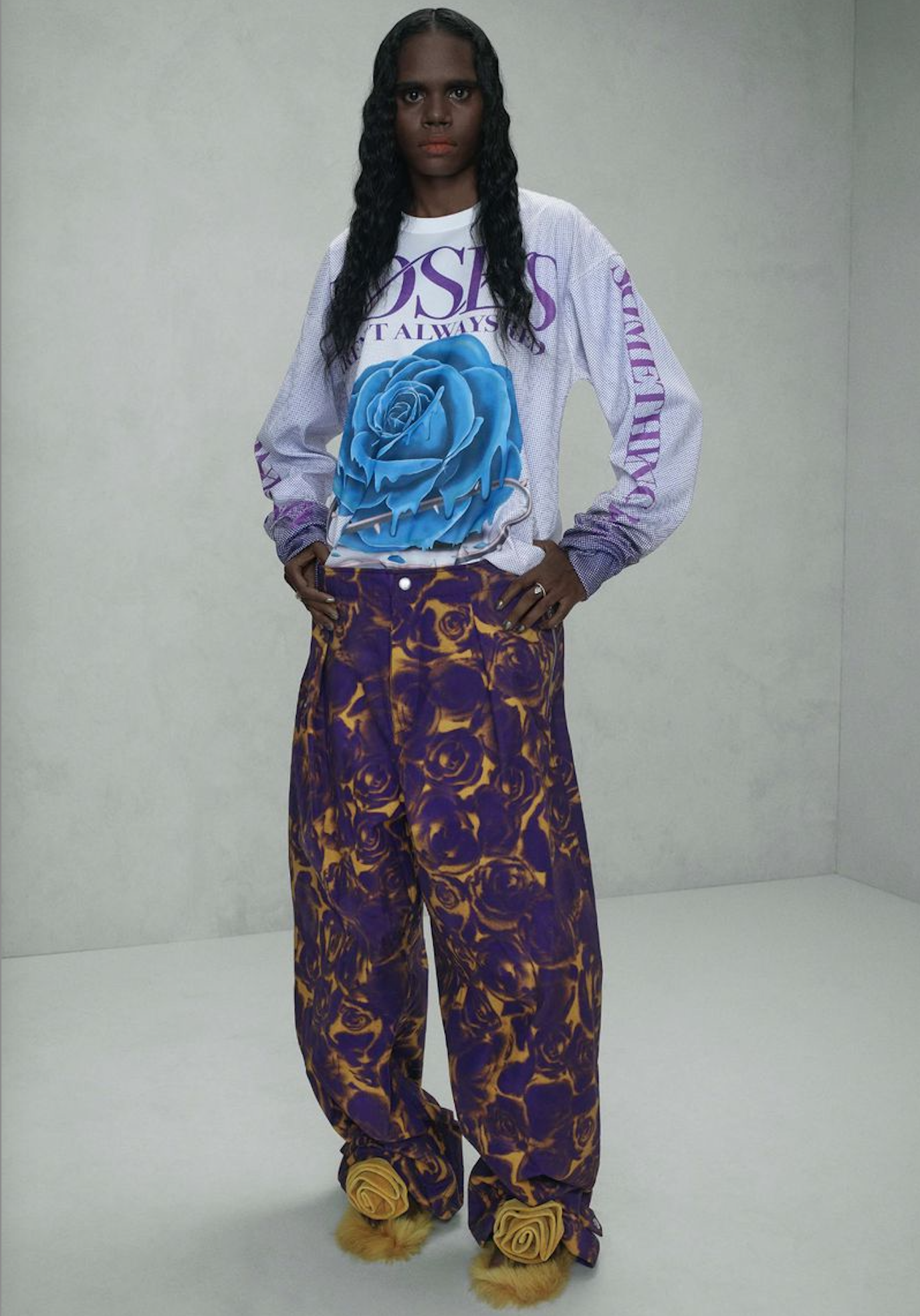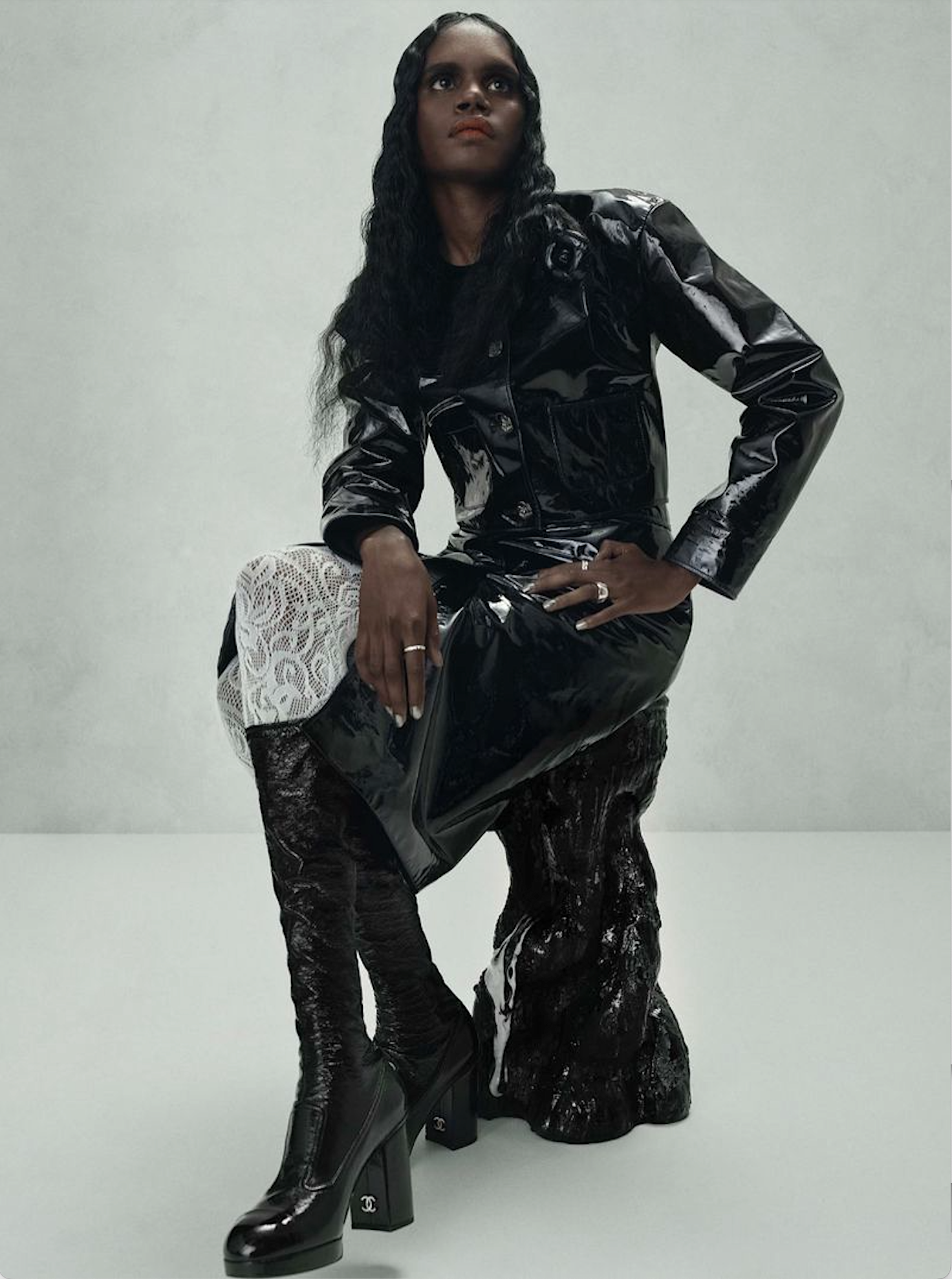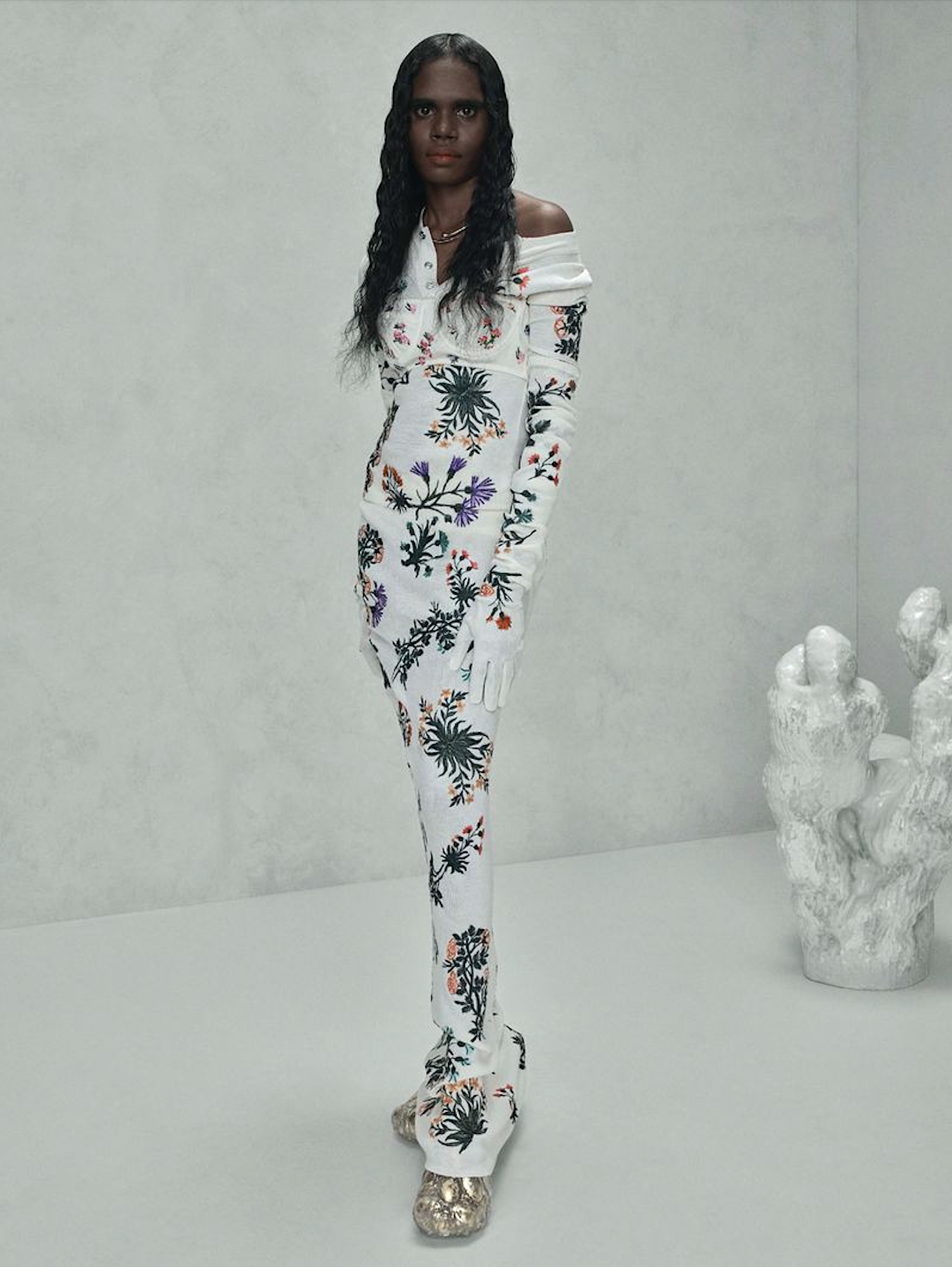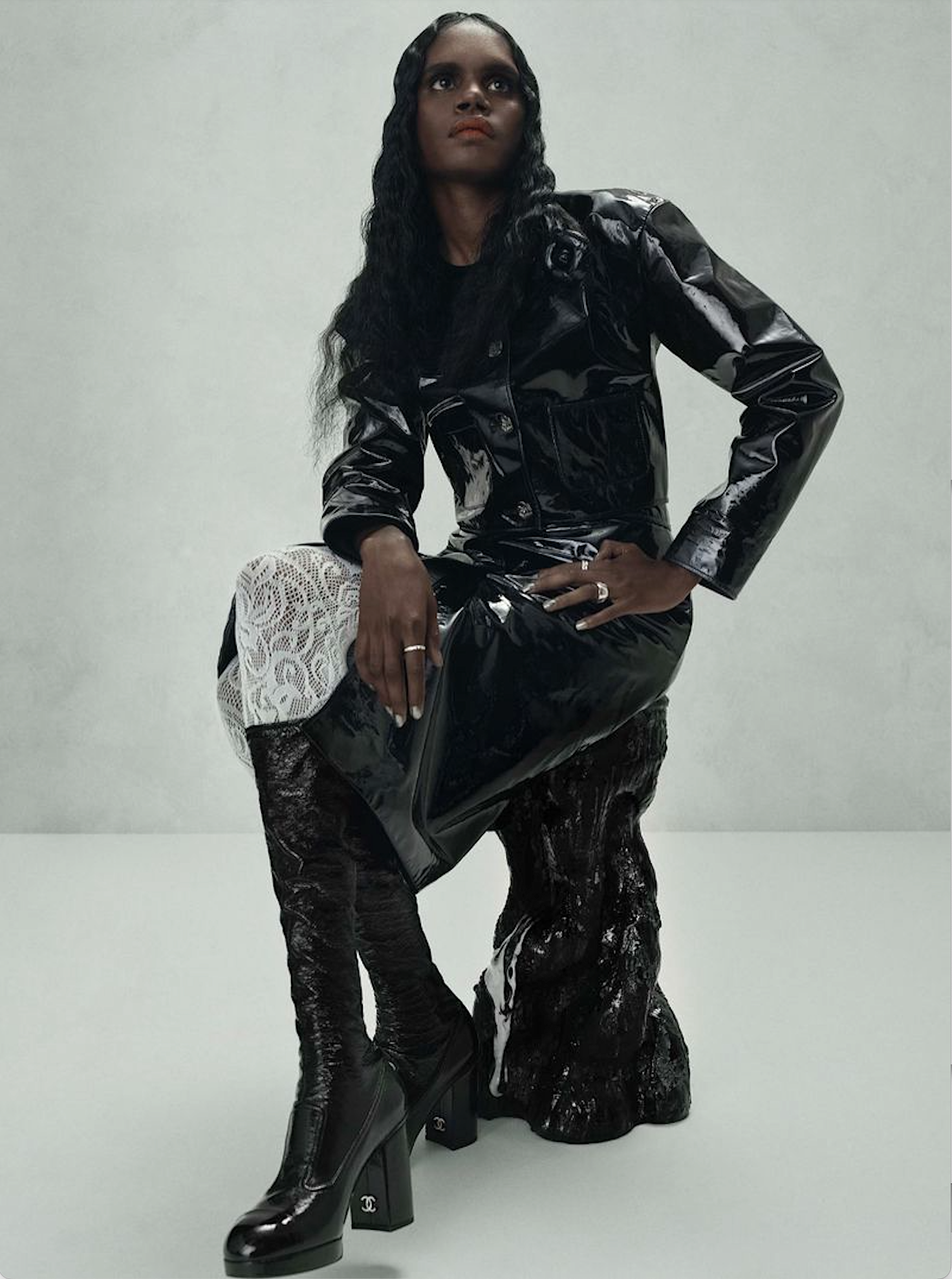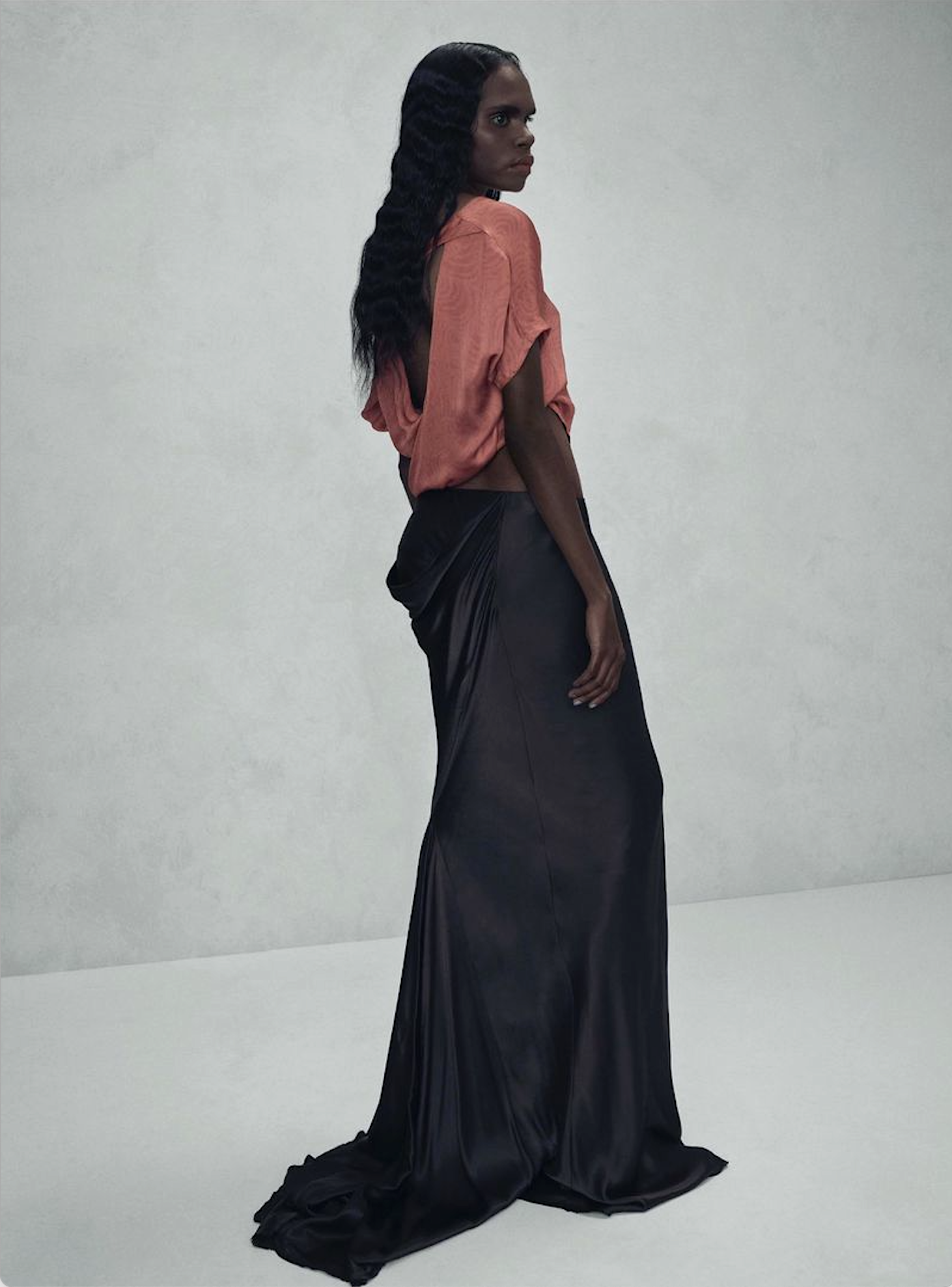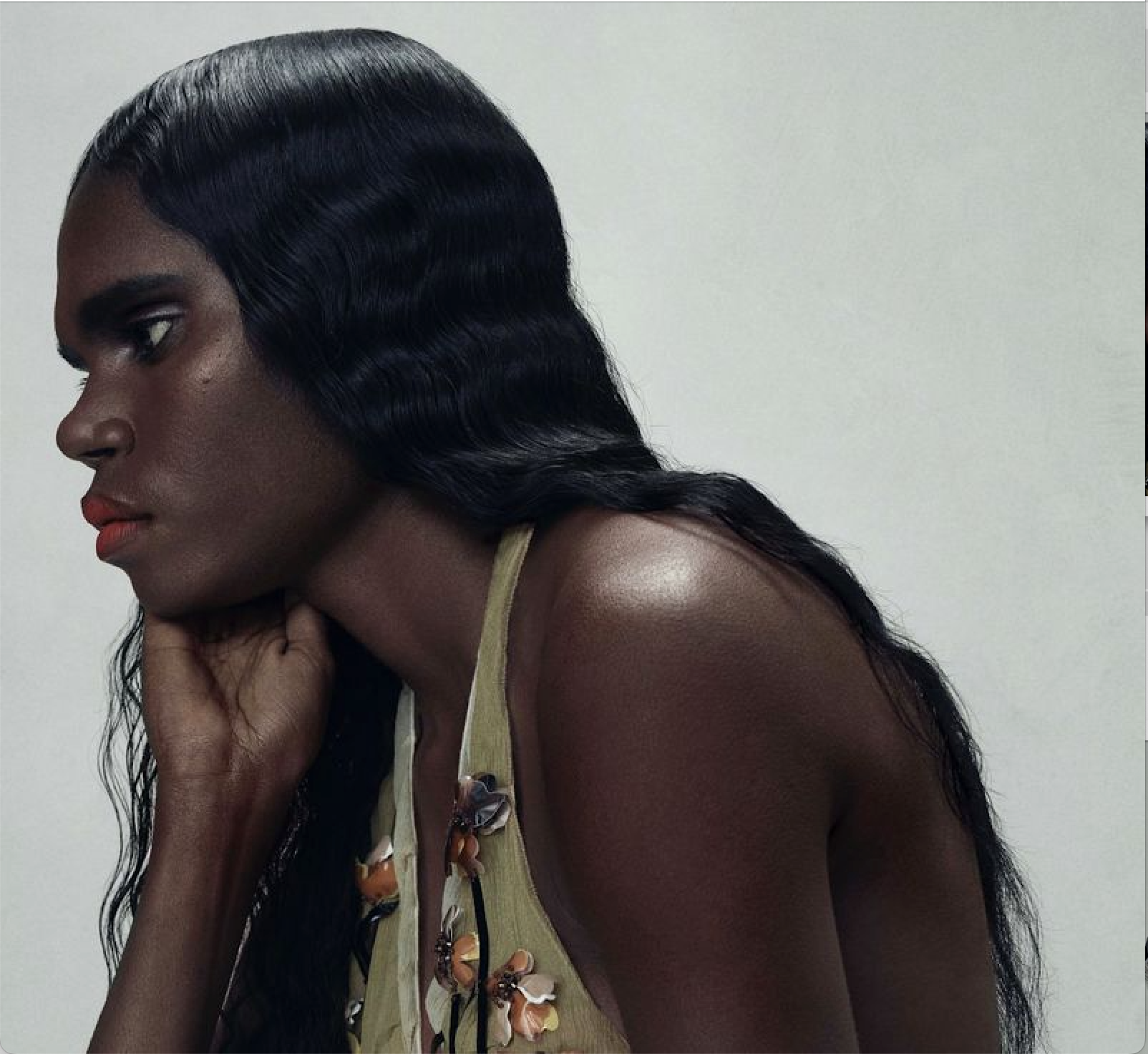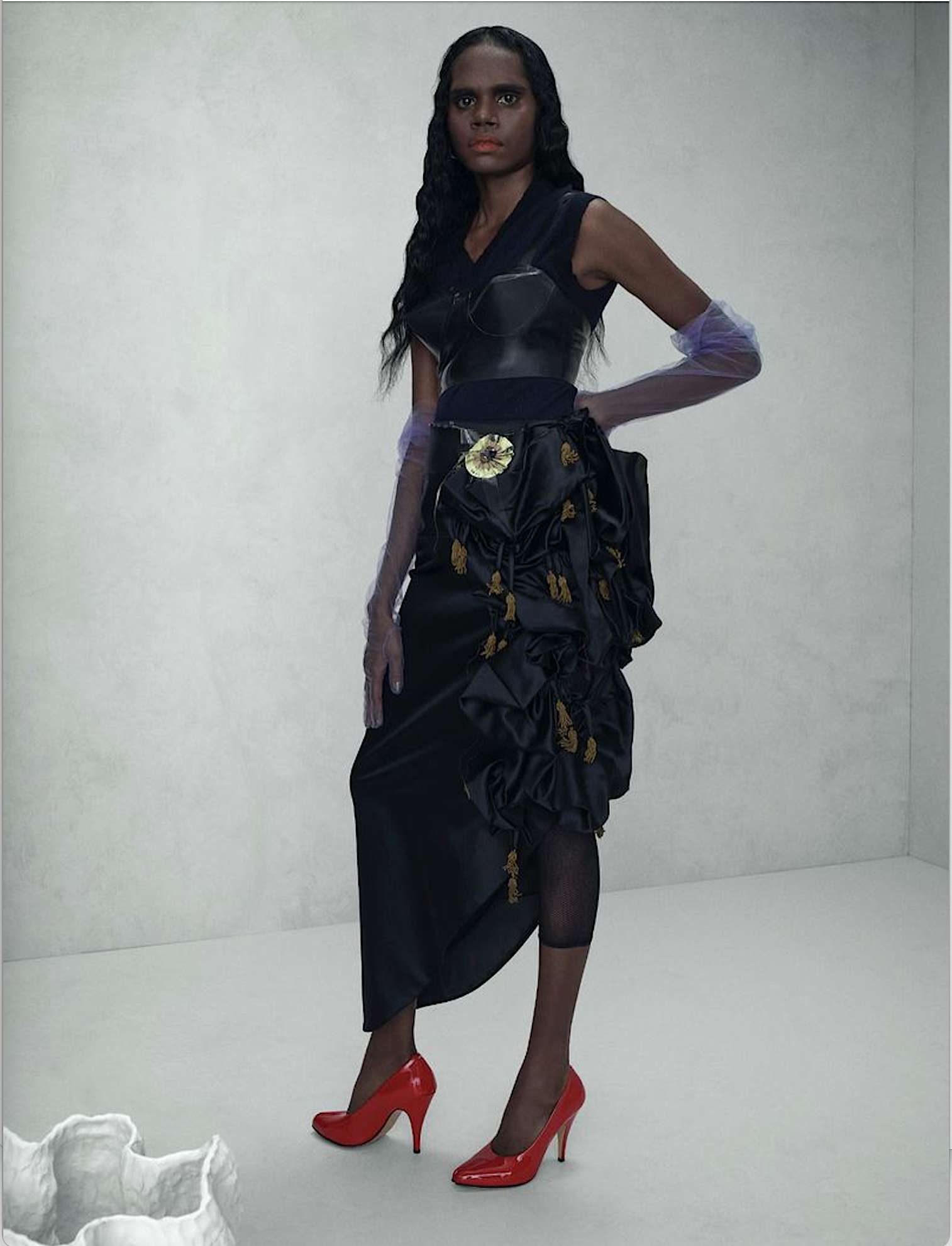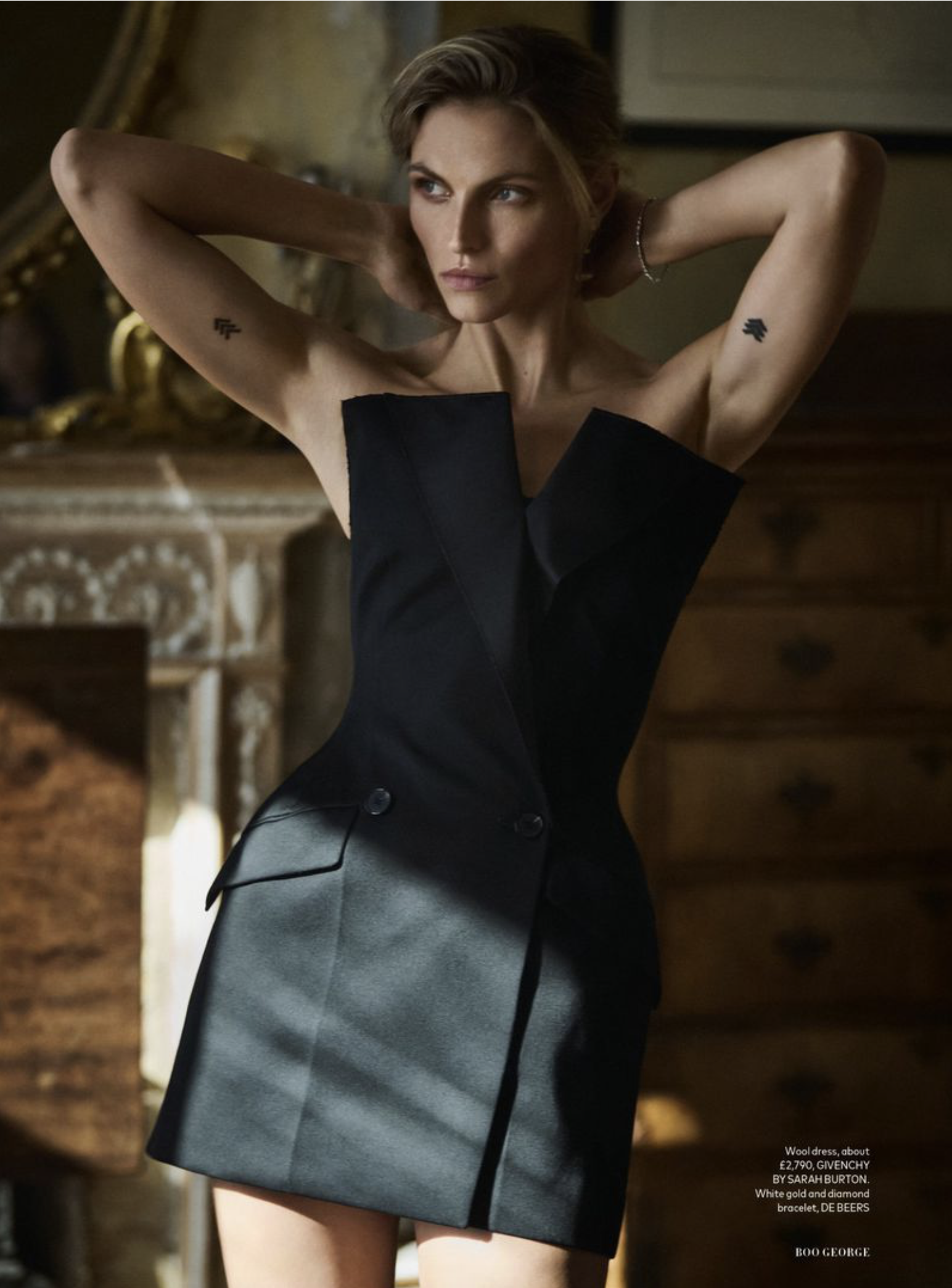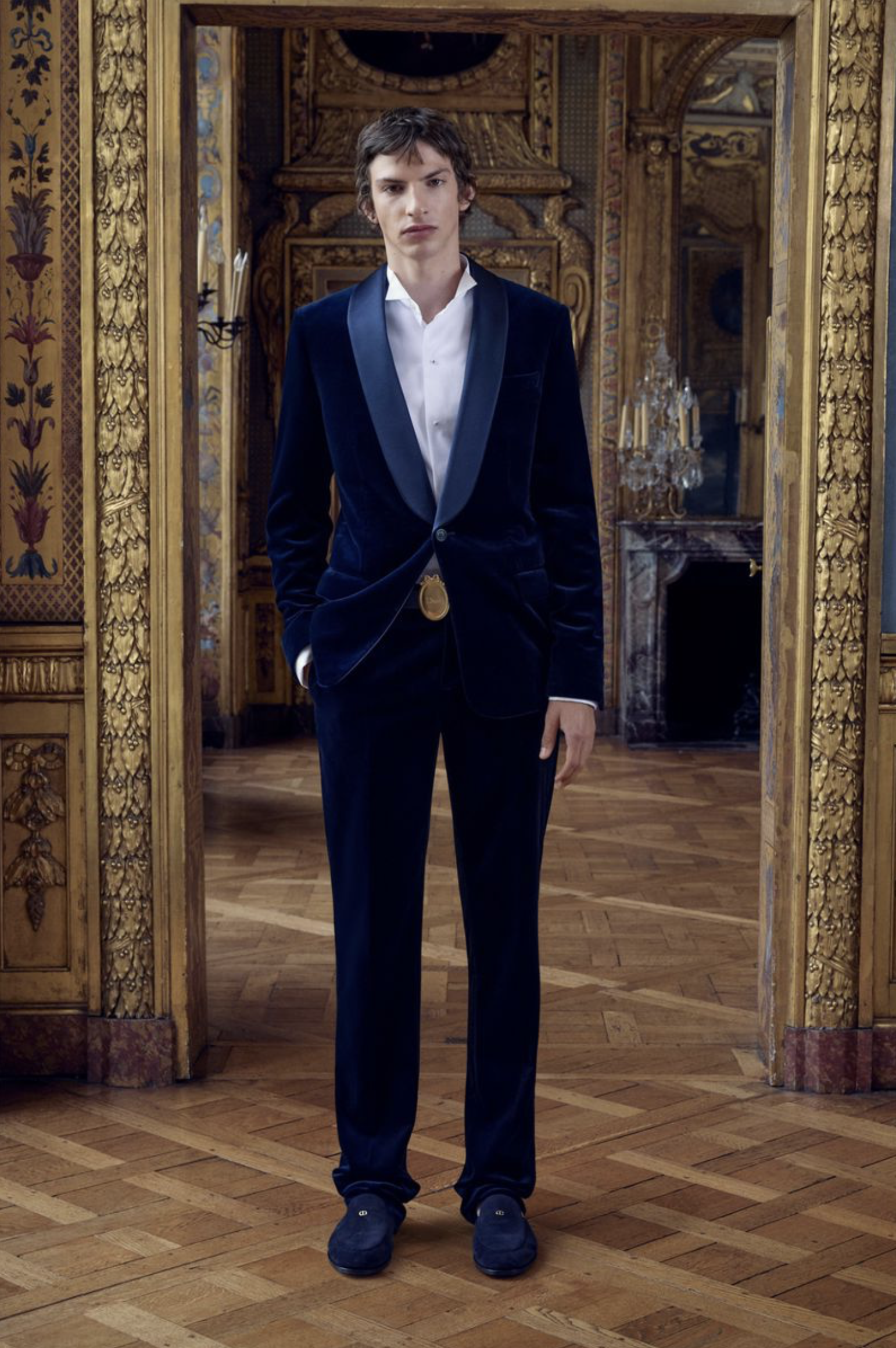Tarlisa Gaykamangu Covers Vogue Australia September by Robbie Fimmano
/Rising model Tarlisa Gaykamangu covers the September 2023 issue of Vogue Australia [IG], as she embarks on her career as a fashion model.
Petta Chua styles Gaykamangu in luxury looks from Burberry, Chanel, Gucci, Miu Miu, Tiffany & Co and more. Sydney-based photographer Robbie Fimmano [IG] is in the studio.
The bilingual model, who speaks English and Djambarrpuyngu — one of the many languages of East Arnhem Land, had a helping hand from her Aunty Liandra, interviewed previously by Vogue Australia.
Liandra Gaykamangu launched Liandra Swim [IG] in 2018. She uses authentic, hand-drawn prints inspired by aboriginal Australian culture. The Liandra swim collection tries to be kind to the planet. The brand uses the technology developed at Unifi, through their recycled ocean plastics REPREVE® fabrics, in all of their swimwear. All Liandra Swim packaging is 100% compostable and can be recycled anywhere in the world.
Tarlisa Gaykamangu at Bottega Veneta
In their cover story about Tarlisa Gayamangu, Vogue Australia notes that slowly, “the idea that models need to fit a predetermined mould and work in with the existing system, and not the other way around, is being rewired in the fashion industry at large.”
AOC agrees but also believes deeply that the fashion industry is much too reliant on South Sudanese models. White models must make way for many more models of color — Latinos, indigenous cultures models like Tarlisa, Asians from China to India, Arab models and peoples beyond my quick list.
It’s also clear that the range of potential models of color with African ancestry is vast and barely tapped. Because we learn about the world from each of these women and men, wider representation is desired by AOC.
I understand that there’s now a network built around South Sudan, but Africa is a vast continent. In a global world of millions of unique stories and individual personalities, fashion and style can become — and should be — one of the most important sources of narration about global culture and world history.
Returning to the evolving focus on the models — after about 25 years of treating them like dispensable coathangers — Bottega Veneta addressed this issue in their notes for the FW 2023 fashion show. For background, AOC believes that the original supermodels were so influential that the industry — quite literally — cut them down to size.
“These women are naturally themselves, and the goal in the show is to bring out who they are and what they stand for—not to change them to fit Bottega [Veneta],” said notes from the Italian house’s casting team about the FW 2023 fashion show. “The same is true of models such as Tarlisa.”
Bottega Veneta creative director Matthieu Blazy took time to understand Tarlisa’s culture, watching a video about Milingimbi traditions and customs. Vogue writes that because Blazy is a champion of craftsmanship himself, his own interests may have been instrumental in his willingness to watch a video about Milingimbi traditions and customs.
Tarlisa found it gratifying that Blazy was interested in the traditional weaving techniques practised by the renowned Milingimbi weavers featured on the global Vogue website in March, 2023. Hand-harvesting pandanus (gunga) leaves from the shorelines, dyeing it before drying and weaving it by hand in colourways that express ancestral stories, is no small endeavor.
Australia has produced a disproportionate amount of top model talent in today’s world. They deserve high praise in being a major conduit and advocate for these South Sudanese refugee women and also indigenous Australian women like Tarlisa.
I asked Lulu to share more information about the Yolngu people.
AOC has always sought to tell these stories in a world that desperately needs more collective respect among its peoples. Tarlisa’s story goes back 60,000 years, a true factoid that always causes a jolt, when we first read it.
Who are Yolngu People in Australia?
By Lulu AI for Anne: The Yolngu people are an indigenous group living in the northeastern region of Arnhem Land in Australia. They have inhabited this area for over 60,000 years, maintaining strong connections to their land and cultural practices. Yolngu society is characterized by its rich oral traditions, intricate kinship systems, and a deep spiritual relationship with the environment.
One of the remarkable aspects of Yolngu culture is their distinct language system. Yolngu Matha, a group of related dialects, is spoken by these indigenous people, and it forms an integral part of their identity. The language provides a means to pass down important knowledge, traditions, and ceremonies from one generation to the next. Yolngu Matha encompasses a complex system of languages, with different dialects used within the Yolngu clans.
Traditional Yolngu society is organized around a well-defined kinship system, which plays a central role in determining social roles, relationships, and responsibilities. The clans are at the heart of their social structure, defining one's identity, obligations, and connections to the land. Each clan has its own distinct totem, representing a specific animal or natural element that holds spiritual significance. These totems are deeply respected and guide Yolngu people's connections to their ancestral lands.
Yolngu spirituality revolves around the concept of "Dreaming" or "Djukurpa," which encompasses creation stories, ancestral beings, and the sacred relationships between Yolngu people and their natural surroundings. The Dreaming narratives explain the origins of the world, its landscapes, and the laws governing behavior and the harmonious coexistence with nature. Ritual ceremonies like the "Bunggul" serve as a way for Yolngu people to express their spiritual connection with the land and honor their ancestors.
Art is another significant aspect of Yolngu culture, serving as a means of storytelling and cultural preservation. Yolngu artists display incredible talent in creating intricate bark paintings, carvings, and ceremonial objects. They often depict ancestral stories and symbols that hold deep cultural and spiritual significance. Yolngu art has gained international recognition for its unique beauty, capturing the essence of the natural world and the richness of their cultural heritage.
However, like many indigenous communities around the world, the Yolngu people have faced numerous challenges, including dispossession of their land, loss of language and cultural practices, and disparities in health and education. Efforts are being made to address these issues, with Yolngu leaders advocating for self-determination, cultural revitalization, and recognition of their rights.
Overall, the Yolngu people are a vibrant and resilient indigenous community who maintain a strong connection to their ancestral lands, rich cultural traditions, and the profound spirituality of their Dreaming. Through their art, language, and ongoing fight for recognition, they continue to assert their presence and contribute to the cultural mosaic of Australia.
